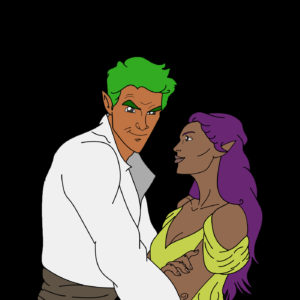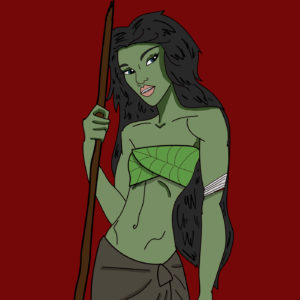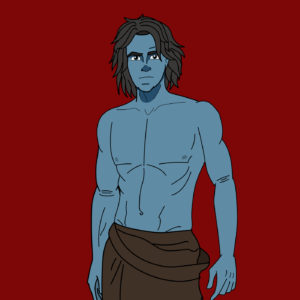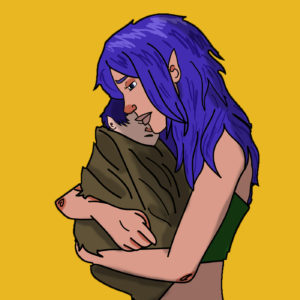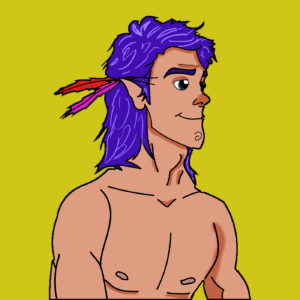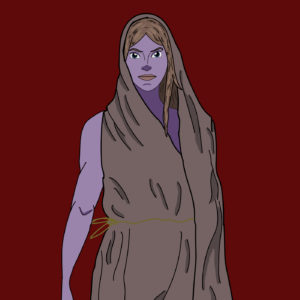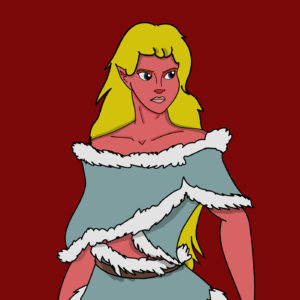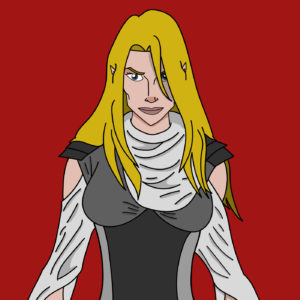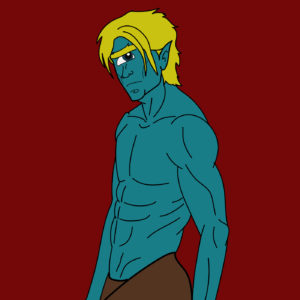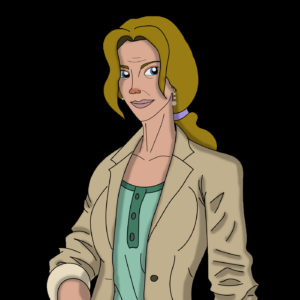Elf (ehlf)
There were few differences between elves and humans. The most notable characteristics were of course their pointed ears and multicolored hair. Males were referred to as “masters” and females were “maidens.” Masters did not have the ability to grow body hair, with their head being the only place where hair — ranging in color from bright red to violet — grew. Additionally, all elves had two hearts beating at alternating rhythms. These hearts were slightly smaller than the average human heart, but pumped twice the amount of blood through the body. They could move quicker with increased levels of adrenaline and fast metabolism, giving them a taller slender appearance compared to humans.
Demographics
The vast majority of elves lived in Fantasia. Between ~70% and ~75% were elves living mainly in the northwestern provinces. Their racial literacy rate was very high, and was estimated at 99.5%. Nevertheless, regardless of the highest or lowest estimates or publications, elves were formally recognized as the largest group in the world, but this was debated by merfolk. Generally, elves were regarded as “a well integrated linguistic people” by academics. They were represented at all levels of “political, military, and intellectual hierarchies, as well as the religious hierarchy” throughout Fabella’s history.
Folklore
Generally, elven folklore varied from region to region and city to city. Cities like Ravis and Hercules had a rich tradition of stories all by themselves. Many structures such as bridges and fountains, as well as natural sites, also played a significant role in tales passed down through families. Elves traditionally cast themselves as heroes in these stories, regardless of what race that person actually was. This created significant confusion for historians as notable non-elf characters such as Emit, Thoth, and Stephanie LaFleur being misinterpreted as elves. Heroes were typically historical figures, whose lives and skills in battle were emphasized.
Culture
Lifestyle
The elven people had a well-developed culture and were known as skilled warriors in combat. They originally lived by fishing, hunting, gathering, and growing crops on burned-off mountain fields. Elves also practiced crafts such as weaving, net knotting, and woodworking. They also had traditional musical instruments and dances.
Performing Arts
Elves expressed themselves in a variety of artistic ways including dance, music, and theater. Elven music was fast paced and intense. It was considered one of the most influential high-quality music in the world and its content covered diverse and multiple component elements of the music that was found in Western and Eastern musical civilization.
The “minas” was a popular folk dance among the elven people. It was commonly danced by elves at weddings, festive occasions, and parties. The dance could be performed with singing and musical accompaniment. The “sala” was a form of group dance for the new year. Some dances alternated between singing and dancing, and hand-drums were commonly used as accompaniment.
Religion
Before Aphrodesian, elves adhered largely to worshiping the polytheistic beliefs of their societies. This ranged from assigning spiritual connection to the natural world to honoring the Titans and Olympians as “gods.”
With the rise of Aphrodite as a religious figure and holy daughter of Lord Lukis, the majority of elves adopted Aphrodesian as their chosen religion. The Aphrodesian religion greatly emphasized decision making made by love with respect to others outside of yourself in mind. Elves were the first to established a church that independently celebrated Aphrodite’s life and teachings.
Language
Unlike most people races, elves did not have a unique language for their people. Their reasoning sprang directly from Aphrodesian faith being one that emphasized connection to the world. To have a covert language did not sync with Aphrodite’s messaging.
Literature
Elven literature dated back to 3021, when Chakora Hyserit first invented the alphabet. This period of time was often viewed as the Golden Age of elven literature. Early literature was written by the “father of elven history”, Zeus, who authored the History of Elven Heritage. The book covered the time-frame from the formation of the elven people to the Age of Monsters.
Fashion
Elven clothing was usually blue, red, green, yellow, and purple; these colors were also used as embroidery on a white piece of clothing. Decoration was lavish in costumes, and sometimes involved jewelry.
The elves were proficient weavers, incorporating symbolic patterns and designs on their traditional dress. The features were mainly of geometric style, and the colors were bright and dazzling. Most of the designs were horizontal lines. In elven culture, the horizontal lines represented the rainbow bridge which lead the dead to where the ancestors’ spirits lived. The favorite color of elven culture was red because it represented blood and power.
Cuisine
Elven cuisine was rich in grains, meat, potato, cheese, bread and tomatoes. Typically, rice was served with every meal, with a stew poured over it. Tea was a popular drink, and there were several dishes of desserts, snacks, and beverages. Alcoholic drinks such as wine and wheat beer were organically produced and drunk.
Sports
Many types of sports are played in by elves, among the most popular being those that included extreme acrobatics and running. Elve athletes routinely rose to prominence winning plenty of trophies and helping their respective countries in the Paragon Tournament from the very genesis of the games themselves. Elves were also successful in chess, which was the most popular mind sport in their culture. Some of the most prominent chess players in the world were elves. There were also successful elves in the high-contact sport of Looseball.

